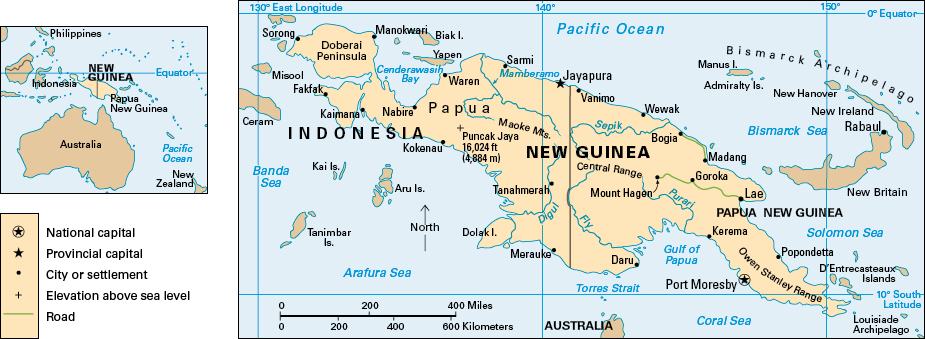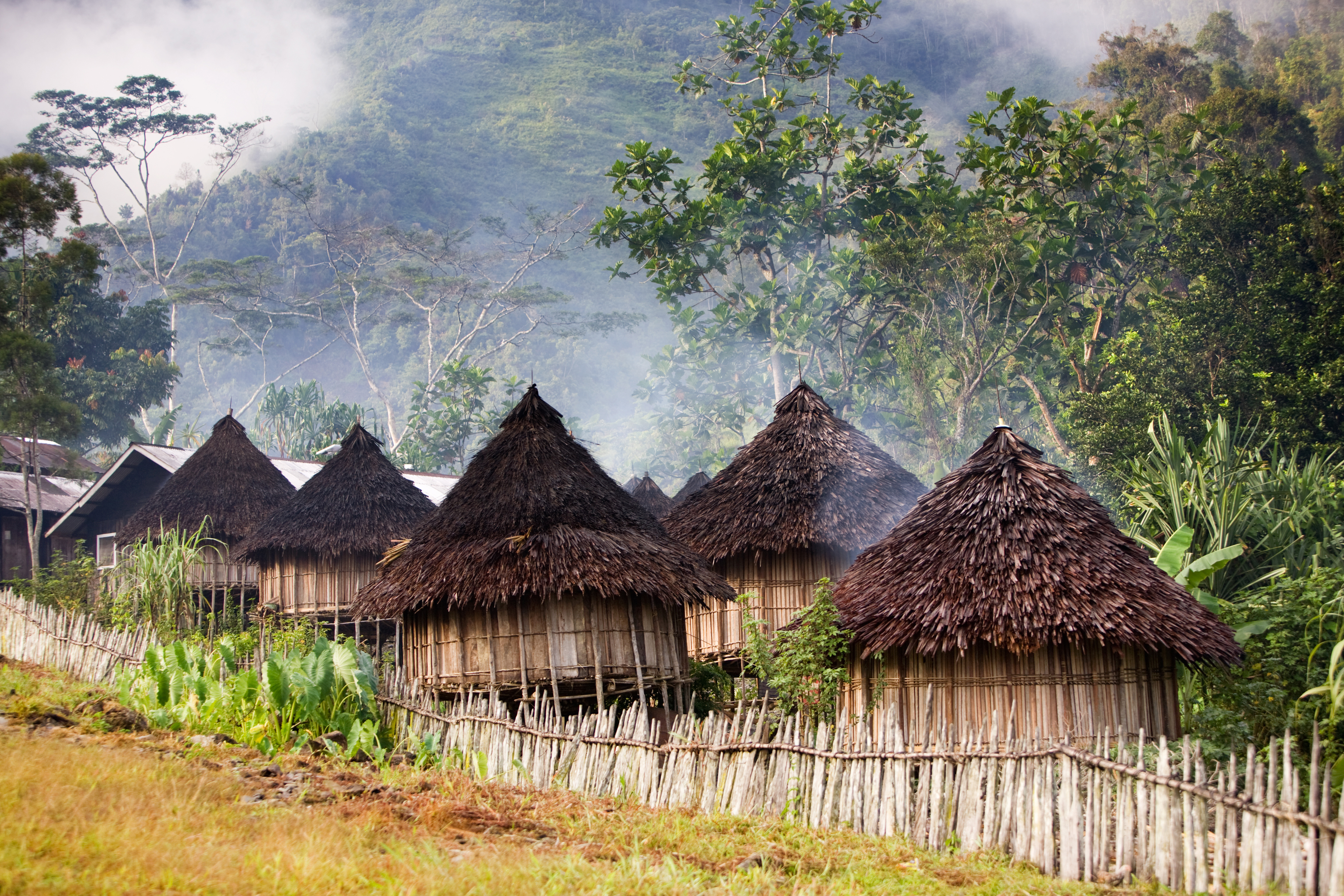Papua << PAP yoo uh or PAH poo ah >> is a region of Indonesia that covers the western half of the island of New Guinea and some small islands to the north and west. The region has also been called West New Guinea, Irian Barat, and Irian Jaya. The Indonesian government changed the name from Irian Jaya to Papua in 2002.
Papua is the most thinly populated region of Indonesia and one of the least developed. Jayapura, a city on the northern coast, is Papua’s largest city.

More than three-quarters of Papua consists of high mountains. The Maoke Mountains extend for 400 miles (640 kilometers) across central Papua and include the 16,024-foot (4,884-meter) Puncak Jaya, the highest mountain in Indonesia. Although the island has a tropical climate, the mountain peaks are covered with snow. Between the mountains lie deep valleys covered with rain forest vegetation. The rest of the region consists of grassy plateaus, swamps, and jungle.
Most of the people of Papua are Melanesians. A majority of people who live in Papua’s cities come from other parts of Indonesia. This is due to the Indonesian government’s policy of transmigration—moving people from densely populated areas, such as Java, to less populated islands. Christianity and Islam are the main religions in Papua, although many villagers follow the traditional religion of spirit and ancestor worship.
There are hundreds of ethnic groups in Papua, most with their own languages and traditions. Some languages are spoken by as few as 50 people. Most of the inhabitants of the mountainous interior live in remote villages. They grow sweet potatoes as their main food and raise hogs for meat. Many people in the lowland coastal regions also live in small villages. They survive on fishing, hunting, and collecting sago, a starch that comes from palm trees.

Agriculture is the chief occupation of the people of Papua. Rice, corn, peanuts, and soybeans are grown as food crops on the lowland plains. Commercial crops include cloves, cocoa, coconuts, coffee, nutmeg, and rubber. Many farmers raise buffaloes, cows, hogs, and other livestock. Fishing and forestry provide other sources of income. Local crafts include basket- and mat-weaving, and woodcarving.
Papua’s natural resources include copper, gold, natural gas, and oil. Some of the world’s largest copper and gold mines operate in the region.
Transportation in Papua is difficult. Much of the region can be reached only by air, by sea, or on foot.
The rain forests are home to many animals, including tree kangaroos, opossums, anteaters, flying foxes, wild pigs, crocodiles, tortoises, and snakes. There are also many species of birds and butterflies. Papua has numerous varieties of trees and plants, including tropical hardwood trees and rare plants, such as certain kinds of orchids.
The Netherlands controlled parts of Papua, which was then known as West New Guinea, from the 1800’s until the early 1960’s. Many people native to the region wanted to make their homeland an independent country. The Netherlands gave control of the region to the United Nations (UN) in 1962, and the UN gave Indonesia responsibility for administering the area. Indonesia called the area Irian Barat (West Irian) and made it a province. In 1973, Indonesia renamed the province Irian Jaya (Victorious Irian). Many of the region’s people continued to press for independence. In 2002, the Indonesian government renamed the province Papua, the name preferred by people of the region.
In 2003, Indonesia’s government began implementing a plan to split Papua into three provinces named West Irian Jaya, Central Irian Jaya, and Papua. Many Papuans strongly opposed this division. West Irian Jaya was formally established, but Central Irian Jaya was not formally set up because of strong local resistance. In 2004, Indonesia’s Constitutional Court ruled that the law dividing Papua into three provinces was unconstitutional. But the court upheld the establishment of West Irian Jaya, which was renamed West Papua in 2007.
In 2022, the Indonesian parliament passed laws that divided the province of Papua into four provinces, and the province of West Papua into two provinces, for a total of six provinces.
